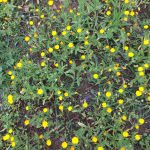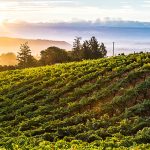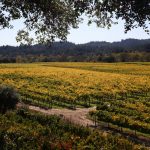Winter vineyard landscapes can be as picturesque as the spring bloom or fall harvest colors. Understanding the seasons in the vineyards heightens our appreciation of the pre- and post-pruning vineyard landscapes.
After harvest, the rainy season begins and temperatures fall as winter approaches. Late fall, the vines drop their colorful leaves and head into dormancy, resting up for the growing season ahead. What happens during the winter months determines the health of the vines and the upcoming harvest’s crop. Understanding this expands our appreciation for the lifecycle of a grapevine and why vineyards are beautiful no matter the season.
If you are a gardener or enjoy landscaping, you are familiar with the techniques and reasons for pruning. Though similar to pruning trees, shrubs and flowering plants, pruning grapevines has some specific differences. Here is a quick 101 on grapevine pruning.
What is Pruning?
Think of pruning as the last step of the vintage that was just harvested and the first step to ensure the next harvest provides excellent fruit. Pruning is cutting back the previous year’s vine growth, a step that is vital to the health of the grapevine. It also determines amount of fruit that will grow that year and where it will grow. Vineyard folks call this creating the “fruit zone.”
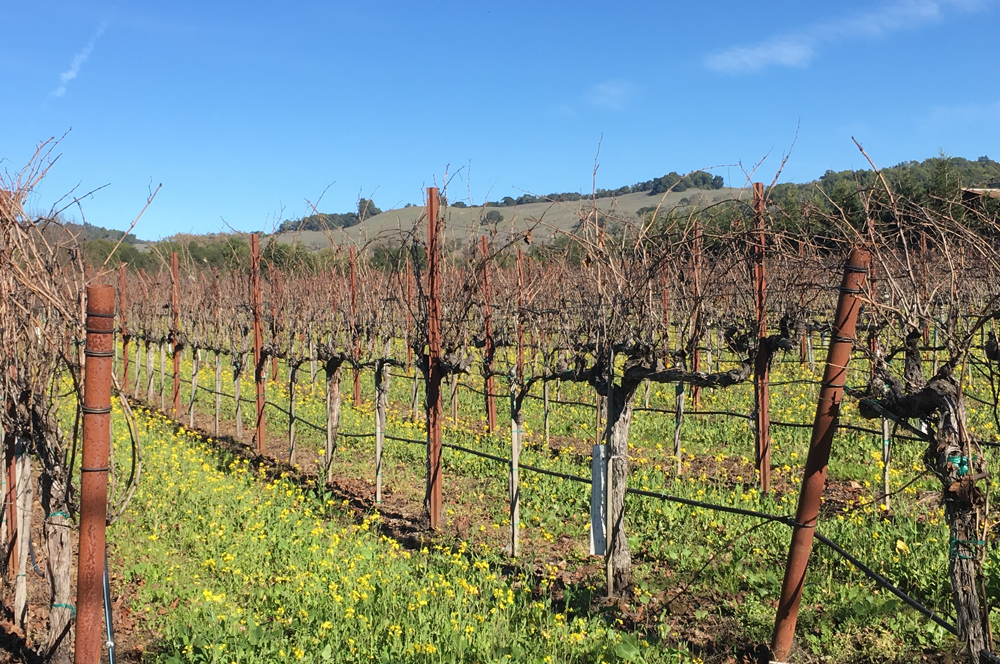
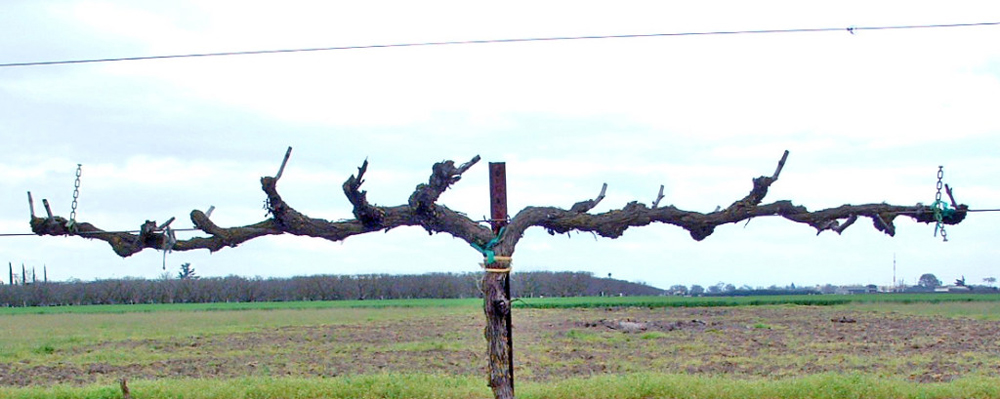
Like any vine, grapevines love to grow in all directions. Through proper pruning, the vines will grow in the “zone” and produce fewer grape clusters per plant. Fewer developing grape clusters means the nutrients provided by each grapevine have a narrower focus, allowing each cluster to develop deep, rich flavors. Less fruit per vine equals more flavor per cluster.
Crews Give Vineyard TLC
The vineyard crews who prune the vines often are the same folks who care for the vineyard year round. They know exactly where to cut off last year’s vine growth and how much of the cane growth to leave for the maximum health of the vine. There are two methods of pruning—cane pruning and spur pruning. We won’t go into to all the technical details of pruning, because it isn’t as simple as it sounds.
Properly pruning grapevines is such a revered skill that many grape producing areas have pruning contests. The men and woman who prune the vineyards generally purchase and maintain their own pruning shears. They care for their shears like an artist would a favorite paintbrush. These highly-skilled pruners are seasoned veterans of their art form, and even though it is hard work, have been known to exclaim how much they love pruning.
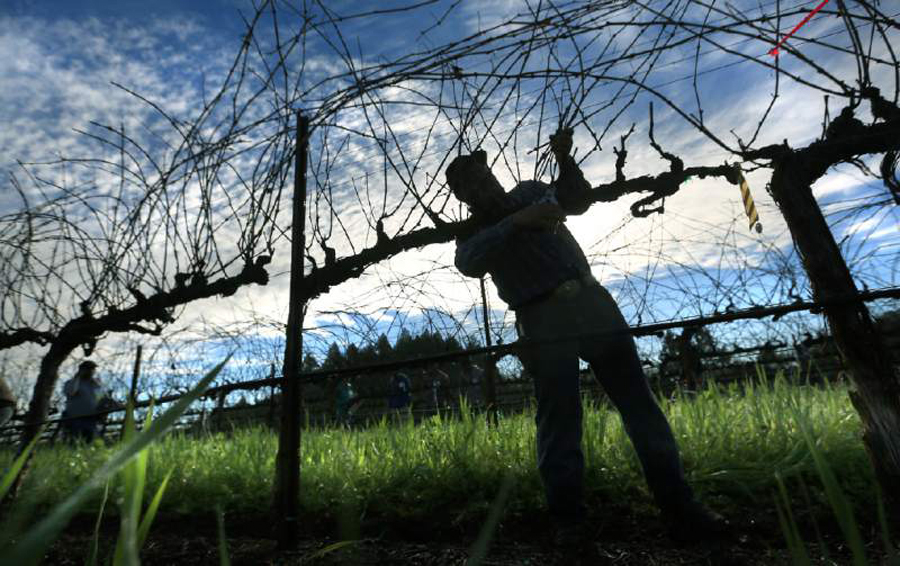
The Zen of Pruning
“The Zen of pruning is having people who understand the art of pruning,” said Fred Peterson, owner of Peterson Winery and Bradford Mountain Vineyard. “Even before they approach a vine, a veteran pruner will have a vision of what a perfectly pruned vine should look like after they are done with it. Then, when the vine is in front of them, they deal with the reality facing them, and do the best they can with each imperfect vine.”
“There is great satisfaction in shaping the vine. You’re making a myriad of choices with each vine you prune, and each choice will shape the quality and quantity of the grapes for the upcoming vintage,” says Peterson. “It is probably my favorite vineyard project each year.”
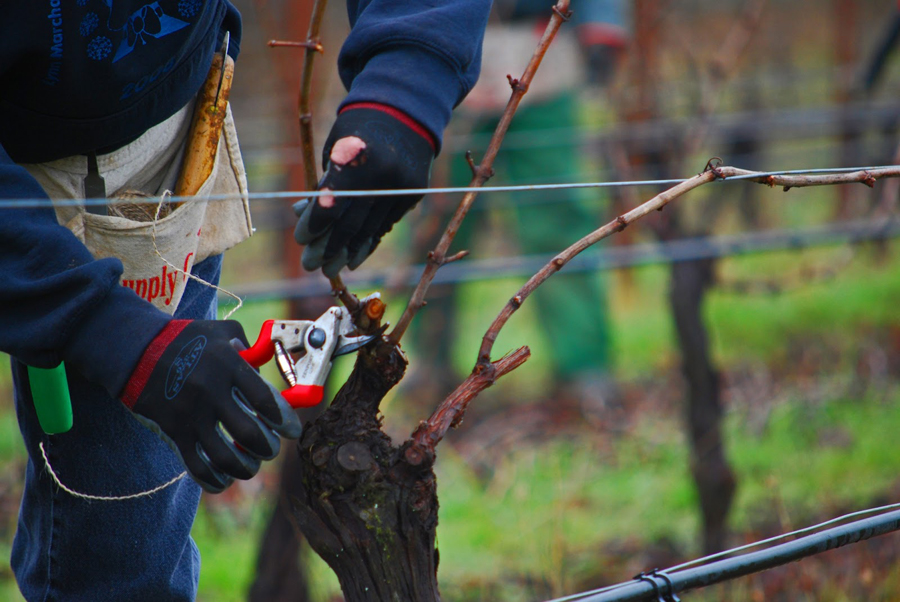
Dedication
Keep in mind, vineyards are pruned in the winter, and the weather conditions aren’t always ideal. Daytime temperatures are often rather cool to down-right cold. It can be foggy, rainy, or muddy, and the wind may be blowing. Yet each winter, thousands of acres need to be pruned in a short window before the weather warms and vines begin to grow again. Vineyard workers can’t wait for ideal weather for it might not happen in the limited time frame when it is optimal to prune the vines. The dedication to caring for the vines takes precedent over the creature comforts of staying warm or dry.
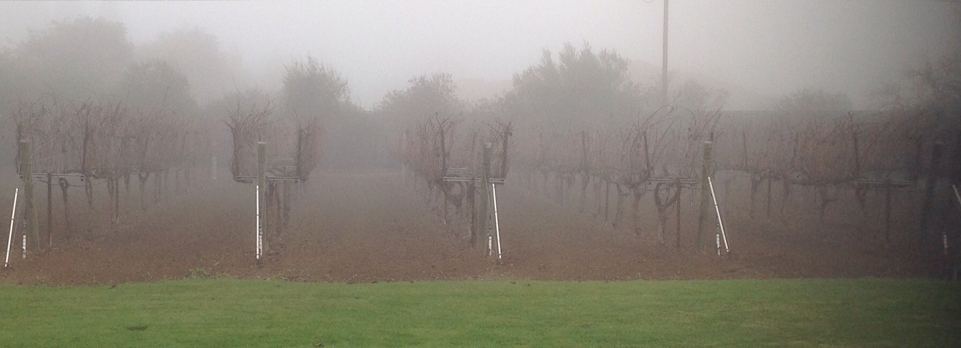
Enjoy the Winter Landscape
If you are looking for an opportunity to visit the Wine Road this winter and see the many pruned and yet-to-be-pruned vineyards for yourself, I recommend coming during Winter WINEland. Over 100 wineries along the Wine Road will be pouring their current vintages. Some wineries will focus on verticals (the same wine from several vintages), while other will offer multiple tastings of just one varietal, like Zinfandel or Cabernet Sauvignon. The winery program is online if you’re ready to take an in-depth look at the offerings.
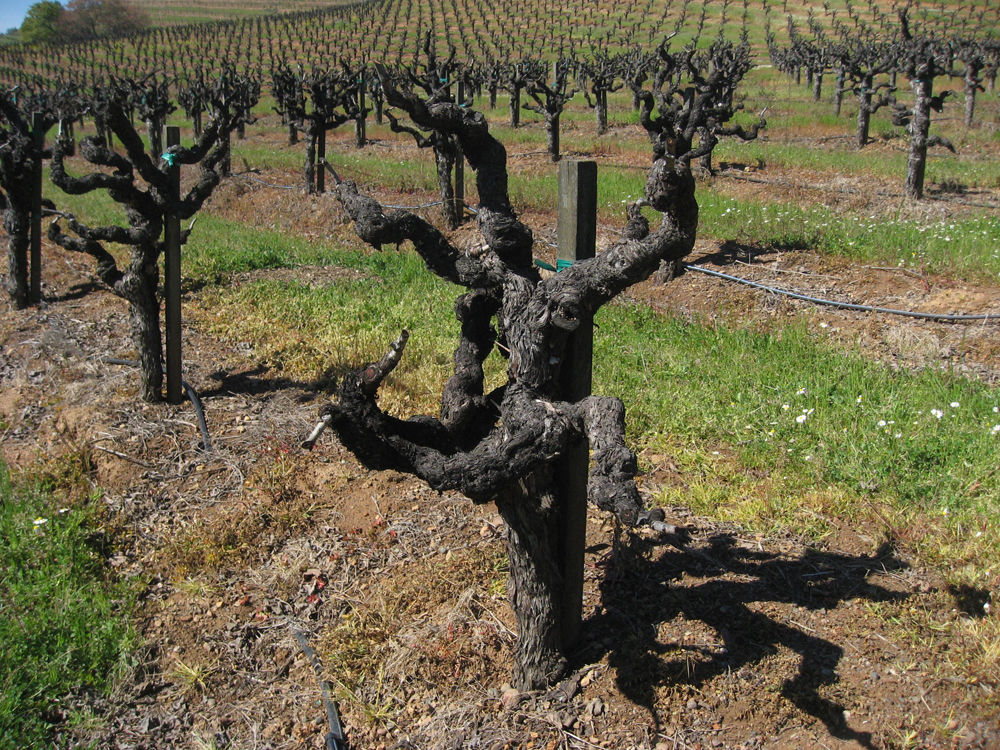
During Winter WINEland, as you drive from winery to winery and gaze at the vineyards that blanket the landscape, I hope you’ll remember that in order to grow exceptional grapes that in turn become stellar wines, a lot of hard work goes into the maintenance of every vine. Pruning is just one of the many vineyard jobs during the course of a year. Stay tuned and in the months to come we’ll be talking about some other aspects of the vineyards along the Wine Road.
Happy Sipping!
@TheWineRoad #AlongTheWineRoad #pruning #WINEland2019 #wineroadlife




